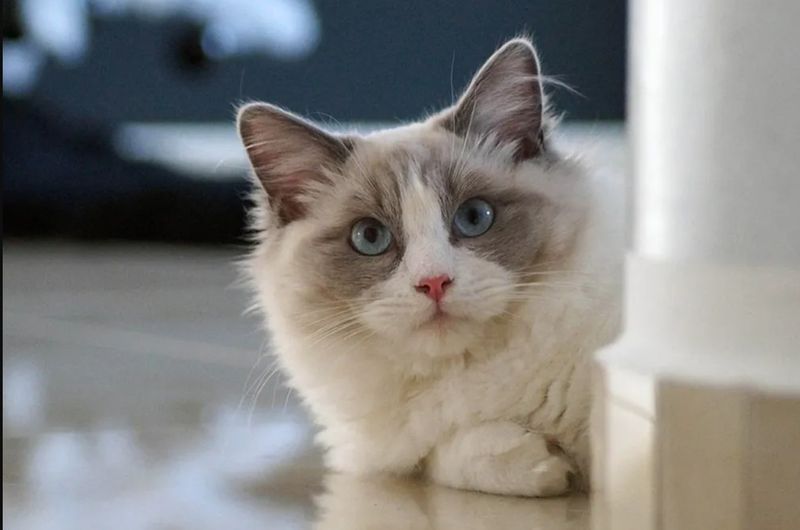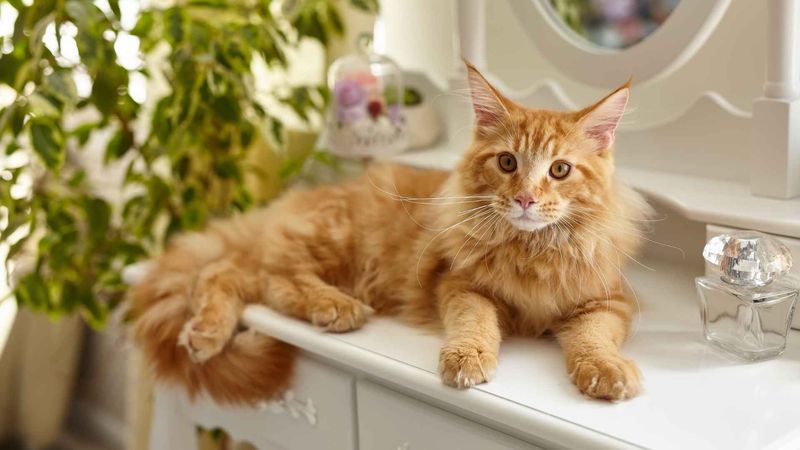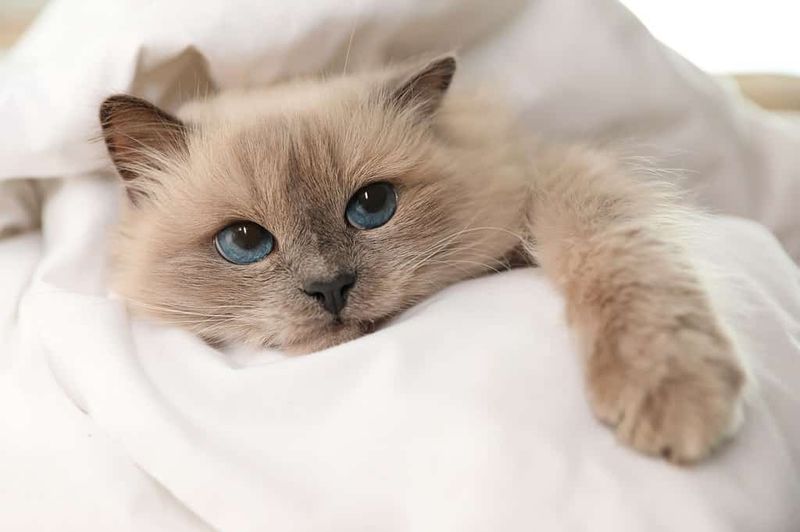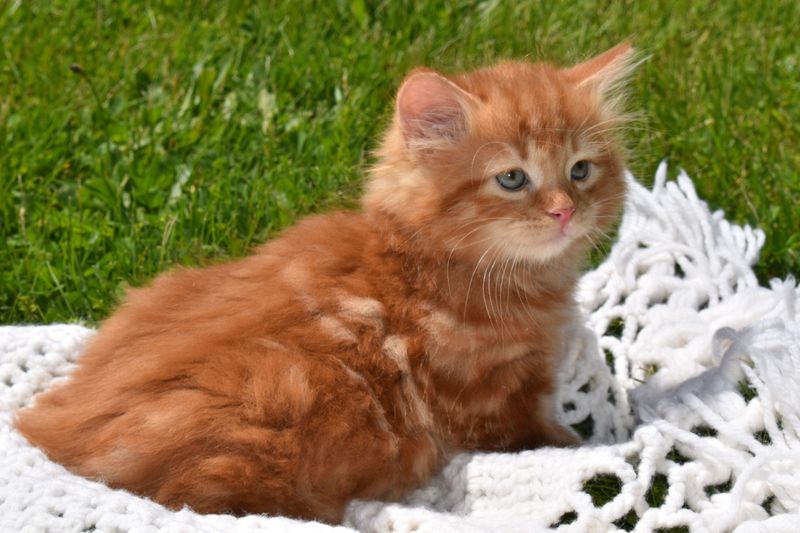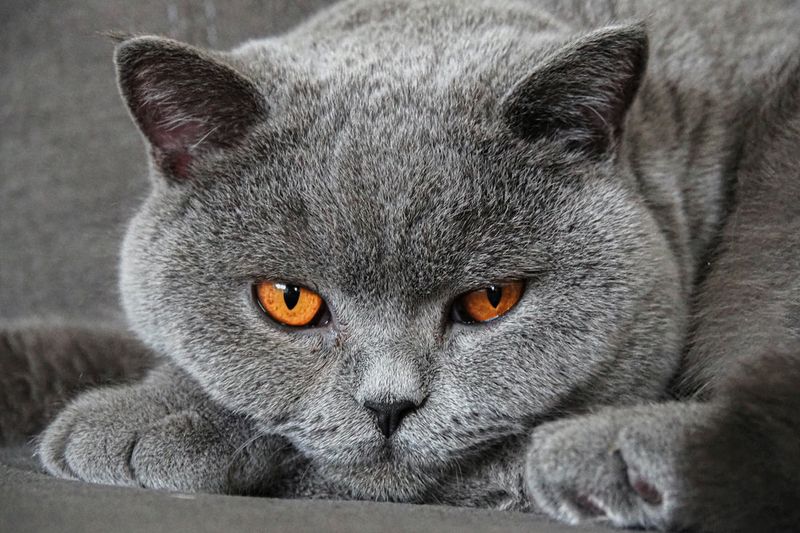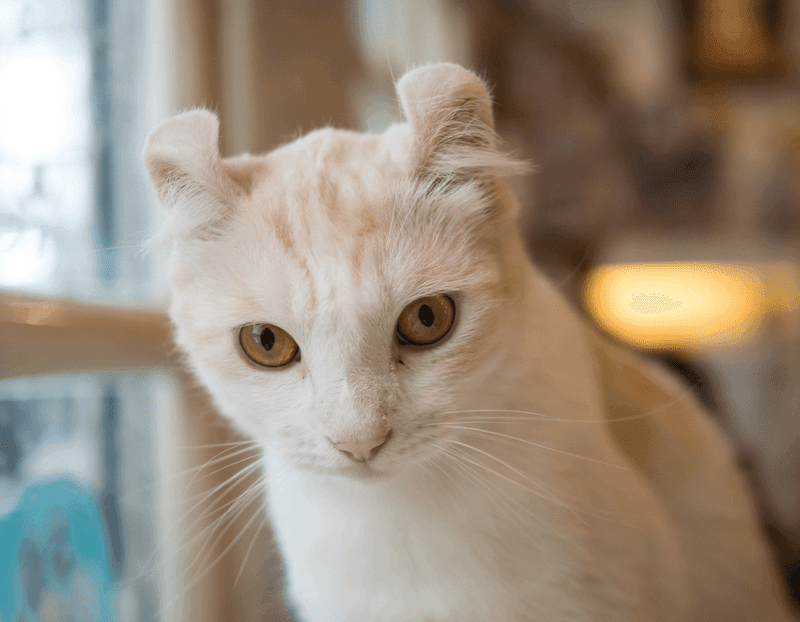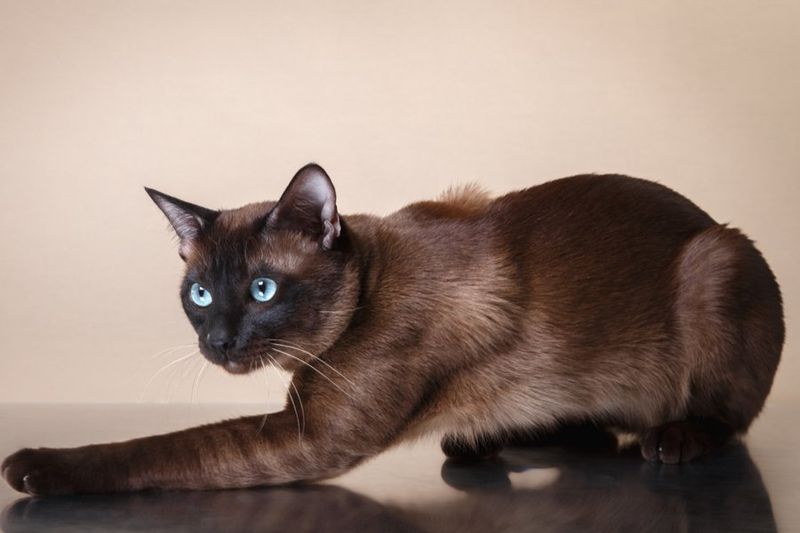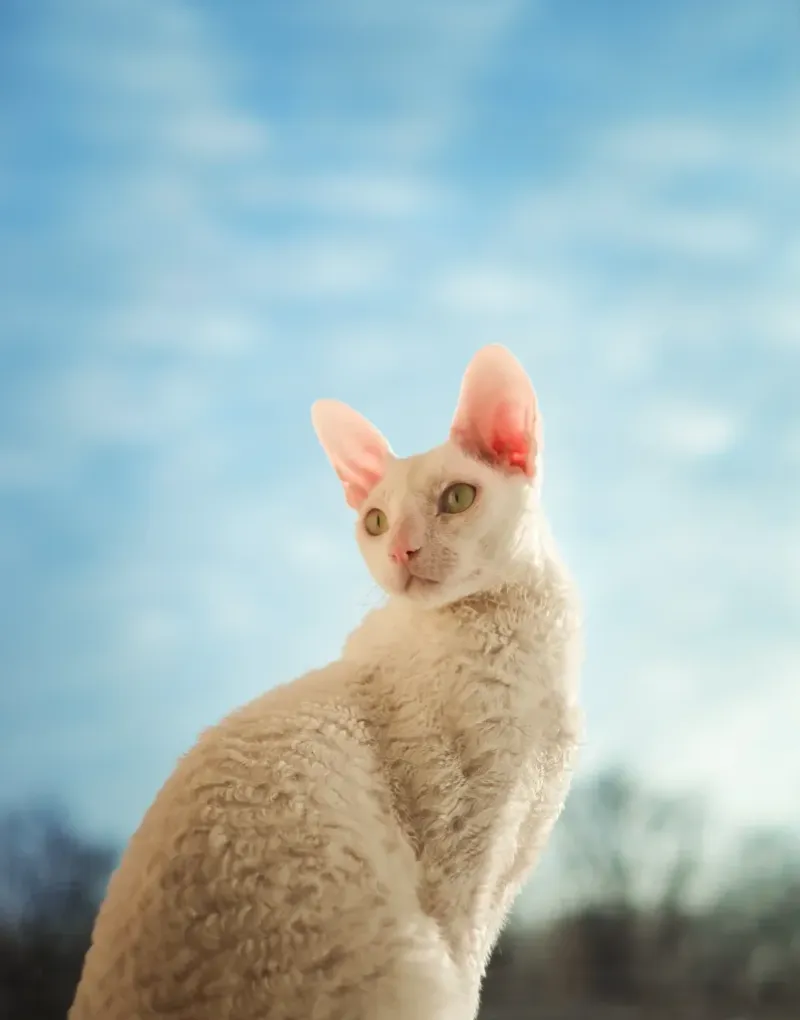📖 Table of Content:
Cats with incredibly soft fur have long captivated those who seek comfort and warmth. Certain breeds stand out for their luxurious coats that resemble living pillows, inviting gentle strokes. Both long-haired and short-haired varieties bring unique textures that delight the senses.
The appeal of a velvety coat goes beyond appearance, offering a soothing and tactile connection. Soft fur can provide relaxation and a sense of calm, making these cats ideal companions for those craving gentle affection. Their coats vary in length and density, each with its own distinctive charm.
From plush to silky, the variety of soft-coated cats suits many preferences. These breeds combine beauty with a comforting presence that enhances everyday moments. Their luxurious fur invites touch and creates a special bond between feline and human.
1. Persian
Persians top the list with their legendarily plush double coats. Their fur consists of a thick, soft undercoat covered by longer guard hairs that give them their distinctive fluffy appearance.
Daily grooming is necessary to keep their coat tangle-free and at its silkiest. Without regular care, these cats can develop painful mats in their fur.
Many owners describe touching a well-groomed Persian’s coat as similar to sinking your fingers into a cloud. Available in numerous colors and patterns, these flat-faced felines combine luxurious softness with an easygoing personality.
2. Ragdoll
Named for their limp, floppy nature when held, Ragdolls also boast silky semi-long coats. Their fur is distinctively soft and smooth, without the heavy undercoat common in other long-haired breeds. This makes grooming easier and helps prevent mats.
Blue eyes shine brilliantly against their color-point patterns, creating a striking appearance. These gentle giants can weigh up to 20 pounds, offering plenty of softness to cuddle.
Despite their luxurious appearance, Ragdolls require less maintenance than you might expect. Weekly brushing is usually sufficient to keep their rabbit-like fur in prime condition.
3. Maine Coon
The shaggy coat of Maine Coons is water-resistant yet surprisingly smooth and silky. Longer hair around the ruff, stomach, and britches adds texture and volume. These features contribute to their unmistakable rugged look.
The texture changes with the seasons. Winter coats grow thicker and softer, while summer fur becomes slightly shorter. Their tufted ears and lynx-like appearance add to their charm.
Originally working cats on New England farms, Maine Coons developed coats that could withstand harsh winters. Their fur contains natural oils that help it shed dirt and stay remarkably soft even with minimal grooming.
4. Birman
Birmans possess medium-length silky fur that lacks the dense undercoat of Persians, making their maintenance much easier. Their distinctive white-gloved paws contrast beautifully with their color-pointed bodies.
The fur around their neck forms a beautiful ruff that feels especially plush to the touch. Owners often describe their coat as feeling like silk or cashmere.
According to legend, these cats were the sacred companions of temple priests in ancient Burma (Myanmar). Their fur quality remains remarkably consistent throughout the year, with minimal seasonal shedding compared to other soft-coated breeds.
5. Russian Blue
The double coat of Russian Blues is thick enough to lift slightly off the skin. Their fur is short and plush, with a velvety texture reminiscent of a soft toy. This luxurious feel is one of the breed’s defining traits.
Their signature blue-gray color comes from a dilution gene that affects the structure of the hair shaft. This genetic feature contributes to the incredibly soft texture that makes them stand out among short-haired breeds.
The coat contains significantly more hair per square inch than most cats, creating that trademark plushness. Despite the density, Russian Blues don’t shed excessively, making them both soft to touch and relatively low-maintenance.
6. Siberian
Adapted for brutal Russian winters, Siberians sport a thick triple-layered coat. Their fur is unexpectedly soft and light, with water-resistant qualities that shield against the elements. This coat balances warmth with a gentle feel.
The outer guard hairs are longer and slightly coarse, while the middle and undercoats are incredibly soft and fine. This combination creates a unique texture that many describe as cloud-like.
Surprisingly, many people with cat allergies report fewer reactions to Siberians. Their saliva produces less of the protein that typically causes allergic reactions, making these soft-furred beauties potentially accessible to those who usually can’t enjoy feline companionship.
7. British Shorthair
The coat of British Shorthairs is dense and plush, feeling like velvet pressed between fingers. Its thickness causes the fur to stand away from the body, creating a soft, rounded shape. This contributes to their classic teddy-bear appearance.
The texture changes as these cats mature. Kittens have softer, fluffier coats, while adults develop the characteristic dense, crisp feel that the breed is famous for.
Most commonly seen in the distinctive “British Blue” color, these cats actually come in many colors and patterns. The plushness remains consistent across all varieties, with the dense coat requiring only occasional brushing to maintain its luxurious feel.
8. Somali
Often referred to as “fox cats,” Somalis feature bushy tails and richly ticked fur. Their medium-length coat feels incredibly silky and soft, maintaining its smoothness when petted from any angle.
The fur has a distinctive quality that catches light beautifully, creating a glowing appearance. Each hair has several bands of color, contributing to their wild, fox-like look.
Related to Abyssinians but with longer fur, Somalis have coats that require surprisingly little maintenance. Their fur naturally resists tangling, and weekly brushing is usually sufficient to maintain the silky texture that makes them so pleasant to pet.
9. Turkish Angora
Turkish Angoras sport a single-layer coat of fine, silky fur that flows with the cat’s movements. Unlike many longhaired breeds, they lack a woolly undercoat, giving their fur an especially soft, sleek feel.
Traditionally white, modern Turkish Angoras come in many colors while maintaining their signature silky texture. Their fur is longest around the neck and tail, creating a beautiful flowing appearance.
These cats originated in the mountainous regions of Turkey, where their fine coats developed as protection against both cold winters and hot summers. The lack of an undercoat means less matting and easier grooming despite the long fur length.
10. Balinese
Essentially long-haired Siamese, Balinese cats have fur that drapes elegantly along their lean bodies. The medium-length coat lacks the thick undercoat typical of many long-haired breeds, resulting in a notably silky texture. This makes their fur feel light and smooth.
The fur is longest on their plumed tail, which feels especially soft when stroked. Despite their elegant appearance, Balinese cats are playful and active, carrying their soft coats with athletic grace.
Their color-point pattern means the body fur feels slightly different from the points, with the lighter areas often having the silkiest texture. The coat rarely mats and requires minimal grooming to maintain its beautiful flow and softness.
11. American Curl
Famous for ears that curl backward, American Curls also boast silky, smooth coats that capture attention. Their fur, whether short or long, has minimal undercoat, creating a luxuriously soft and satiny touch. This coat texture enhances their charm and elegance.
The coat lies close to the body rather than standing away like fluffier breeds. This creates a sleek appearance while still providing a luxuriously soft petting experience.
These cats require minimal grooming, with the short-haired variety needing just occasional brushing. The long-haired Curls have silky fur that rarely tangles, making them one of the easier long-haired breeds to maintain while still enjoying their velvety texture.
12. Tonkinese
The short, fine fur of Tonkinese cats feels as smooth and soft as mink to the touch. Their coat hugs the body closely, offering a silky texture that surprises with its softness.
A cross between Siamese and Burmese cats, Tonkinese inherited the best coat qualities from both parent breeds. The fur has a natural luster that catches light beautifully, enhancing their elegant appearance.
Available in various point colors, their coat requires minimal maintenance while providing maximum softness. The fur is typically slightly denser than a Siamese’s but finer than a Burmese’s, creating a unique texture that’s often compared to high-quality silk.
13. Ragamuffin
With fur as plush and soft as a rabbit’s, Ragamuffins are a tactile delight. They share lineage with Ragdolls but come in many more color varieties. Their medium to long fur feels like the finest stuffed animals, making them wonderfully cuddly companions.
The coat density increases with age. Kittens start with shorter fur that gradually becomes longer and more plush as they mature, reaching full coat development around 4 years of age.
Their fur has minimal undercoat, which helps prevent matting despite its length and density. The texture remains consistently soft all over the body, with slightly longer fur around the neck and tail adding to their cuddly teddy bear appearance.
14. Burmese
With short, fine fur, Burmese cats have coats that feel silky and satin-smooth. The close-lying fur enhances their sleek body shape while maintaining an extraordinary softness.
The coat has almost no undercoat, which contributes to its silky feel. This short, glossy fur requires almost no maintenance while still providing a luxuriously soft petting experience.
Originally from Southeast Asia, traditional Burmese have a darker brown coat, while modern varieties come in several colors. Regardless of color, all maintain that characteristic satiny texture that many describe as feeling like warm silk beneath your fingers.
15. Cornish Rex
Cornish Rex cats have uniquely soft, wavy fur unlike any other breed. Their coat consists only of the downy undercoat, missing the normal guard hairs that most cats have, resulting in a velvety texture similar to crushed velvet or suede.
The waves in their fur create interesting patterns that enhance the tactile experience of petting them. Many owners describe touching a Cornish Rex as similar to stroking a warm, living plush toy.
These cats feel warmer to the touch than most breeds because their thin coat allows body heat to transfer more easily. Despite their delicate appearance, the fur is remarkably resilient and stays clean with minimal grooming.


